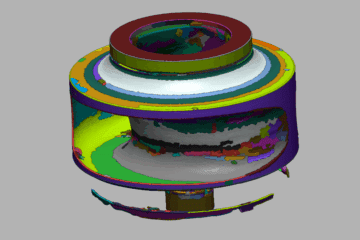Obtaining ISO certification involves implementing and maintaining a quality management system (QMS) that complies with the requirements of the International Organization for Standardization (ISO). ISO certification, particularly ISO 9001, is commonly sought by foundries and manufacturing facilities to demonstrate their commitment to quality and continuous improvement. Here are the general steps a foundry needs to take to obtain ISO certification:
1. Understand ISO Standards:
– Familiarize yourself with the ISO 9001 standard and any other relevant ISO standards that may apply to your specific industry or processes. ISO 9001 is the standard for quality management systems.
2. Management Commitment:
– Ensure that top management is committed to implementing and maintaining a QMS. Leadership support is crucial for the success of the certification process.
3. Form a Quality Management Team:
– Establish a cross-functional team responsible for implementing and managing the QMS. This team may include representatives from various departments within the foundry.
4. Gap Analysis:
– Conduct a thorough gap analysis to identify the current state of the foundry’s processes compared to the requirements of ISO 9001. Identify areas that need improvement or modification.
5. Develop QMS Documentation:
– Create the necessary documentation, including a Quality Manual, procedures, work instructions, and records. Ensure that documentation aligns with ISO 9001 requirements.
6. Training and Awareness:
– Provide training to employees to ensure they understand the QMS and their roles in supporting it. Create awareness about the importance of quality and customer satisfaction.
– Implement the documented QMS processes. This includes processes related to product realization, resource management, measurement and monitoring, and continuous improvement.
8. Internal Audits:
– Conduct internal audits to assess the effectiveness of the QMS and identify areas for improvement. Internal audits should be performed by trained personnel who are independent of the audited areas.
9. Management Review:
– Hold regular management reviews to assess the performance of the QMS. This involves reviewing audit results, customer feedback, and other relevant data to make informed decisions.
10. Corrective and Preventive Actions:
– Implement corrective and preventive actions to address nonconformities and prevent their recurrence. This demonstrates a commitment to continuous improvement.
11. Pre-assessment Audit:
– Conduct a pre-assessment or readiness audit to evaluate the foundry’s readiness for the official certification audit. This is often done by a third-party certification body.
12. Select a Certification Body:
– Choose an accredited certification body to conduct the official certification audit. Ensure that the certification body is recognized and respected in the industry.
13. Certification Audit:
– Undergo the official certification audit conducted by the chosen certification body. The audit will assess compliance with ISO 9001 requirements.
14. Corrective Actions Post-Audit:
– If necessary, address any findings or nonconformities identified during the certification audit. The certification body will conduct a follow-up audit to verify corrective actions.
15. Receive ISO Certification:
– Upon successful completion of the audit process and verification of corrective actions, the foundry will receive ISO certification.
16. Maintain and Improve:
– Continuously maintain and improve the QMS. Regularly undergo surveillance audits conducted by the certification body to ensure ongoing compliance.
It’s important to note that achieving and maintaining ISO certification is an ongoing process that requires commitment to quality, customer satisfaction, and continuous improvement. Regularly review and update the QMS to ensure it remains effective and aligned with the organization’s goals.


